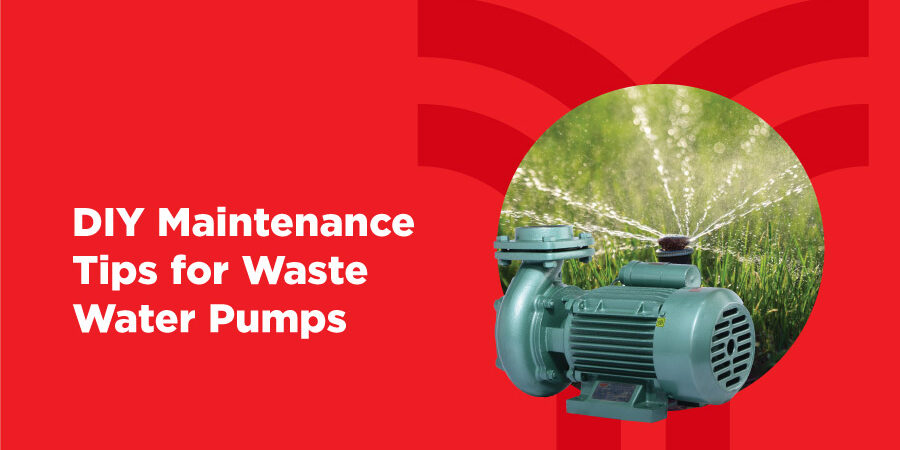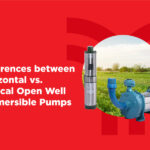DIY Maintenance Tips for Waste Water Pumps: Keep Your System Running Smoothly
Introduction
Regular maintenance is crucial for the longevity and efficiency of waste water pumps. Whether you’re dealing with a submersible sewage pump or a general waste water pump, keeping up with routine maintenance can prevent costly repairs and ensure optimal performance. In this guide, we’ll provide essential DIY maintenance tips to help you maintain your waste water pumps effectively.
General Maintenance Tips for Waste Water Pumps
Regular Inspections
Conducting regular inspections is the first step in maintaining your waste water pump. Look for signs of wear and tear, corrosion, and any other damage that could impact performance. Regular inspections can help you catch issues early before they escalate into major problems.
Cleaning and Debris Removal
Debris and buildup can significantly reduce the efficiency of your waste water pump. Regularly clean the pump and remove any debris from the inlet and outlet. This will ensure smooth operation and prevent blockages that could cause the pump to overheat or fail.
Checking and Tightening Connections
Loose connections can lead to leaks and reduced pump efficiency. Check all the connections and tighten any that are loose. Pay particular attention to the connections around the inlet and outlet, as these areas are most prone to leaks.
Monitoring Pump Operation
Keep an eye on how your pump is operating. Listen for unusual noises, check for vibrations, and ensure the pump is running smoothly. Any changes in the way the pump operates could indicate an underlying issue that needs to be addressed.
Specific Maintenance for Submersible Sewage Pumps
Inspecting the Pump and Motor
Submersible sewage pumps require specific maintenance to keep them functioning properly. Regularly inspect the pump and motor for signs of wear, corrosion, and damage. Ensure the motor housing is intact and free from cracks or leaks.
Cleaning the Impeller and Volute
The impeller and volute are critical components of submersible sewage pumps. Clean these parts regularly to remove any debris or buildup that could hinder performance. A clean impeller ensures the pump can move waste water efficiently.
Ensuring Proper Ventilation
Submersible pumps require adequate ventilation to prevent overheating. Ensure the pump’s vents are clear of obstructions and allow for proper airflow. Overheating can damage the pump and reduce its lifespan.
Checking the Power Supply and Wiring
Inspect the power supply and wiring regularly to ensure there are no loose connections or damaged wires. Faulty wiring can cause the pump to malfunction or stop working altogether. Make sure the power supply is stable and the wiring is in good condition.
Troubleshooting Common Issues
Identifying and Fixing Leaks
Leaks are a common issue with waste water pumps. Regularly check for leaks around connections and seals. If you find a leak, tighten the connections or replace the seals as necessary. Addressing leaks promptly can prevent water damage and maintain pump efficiency.
Addressing Unusual Noises
Unusual noises can be a sign of a problem with your pump. If you hear grinding, squealing, or other unusual sounds, inspect the pump for debris, worn parts, or other issues. Addressing these noises early can prevent more significant damage.
Resolving Power Issues
Power issues can cause your pump to stop working or operate inefficiently. Check the power supply, wiring, and connections to ensure everything is in good working order. If you continue to experience power issues, consult a professional for further assistance.
Handling Blockages and Clogs
Blockages and clogs are common in waste water pumps, especially submersible sewage pumps. Regularly inspect and clean the pump to remove any obstructions. Use a rod or hose to clear clogs and ensure the pump operates smoothly.
Preventative Maintenance Strategies
Scheduling Routine Checks
Set a schedule for routine maintenance checks to stay on top of potential issues. Regular checks can help you catch problems early and maintain your pump’s efficiency.
Keeping a Maintenance Log
Maintain a log of all maintenance activities, including inspections, cleanings, and repairs. This log can help you track the pump’s performance and identify recurring issues that may require professional attention.
Using High-Quality Replacement Parts
When replacing parts, use high-quality components that are compatible with your pump. Quality parts ensure better performance and longevity, reducing the need for frequent repairs.
Training Staff or Household Members on Basic Maintenance
Ensure that anyone responsible for the pump’s maintenance is trained on basic maintenance tasks. This includes recognizing common issues, performing routine checks, and knowing when to call a professional.
Conclusion
Maintaining your waste water pump is essential for its longevity and performance. By following these DIY maintenance tips, you can keep your pump running smoothly and efficiently. Establish a regular maintenance routine, and don’t hesitate to consult professionals for more complex issues. With proper care, your waste water pump will serve you well for years to come.


